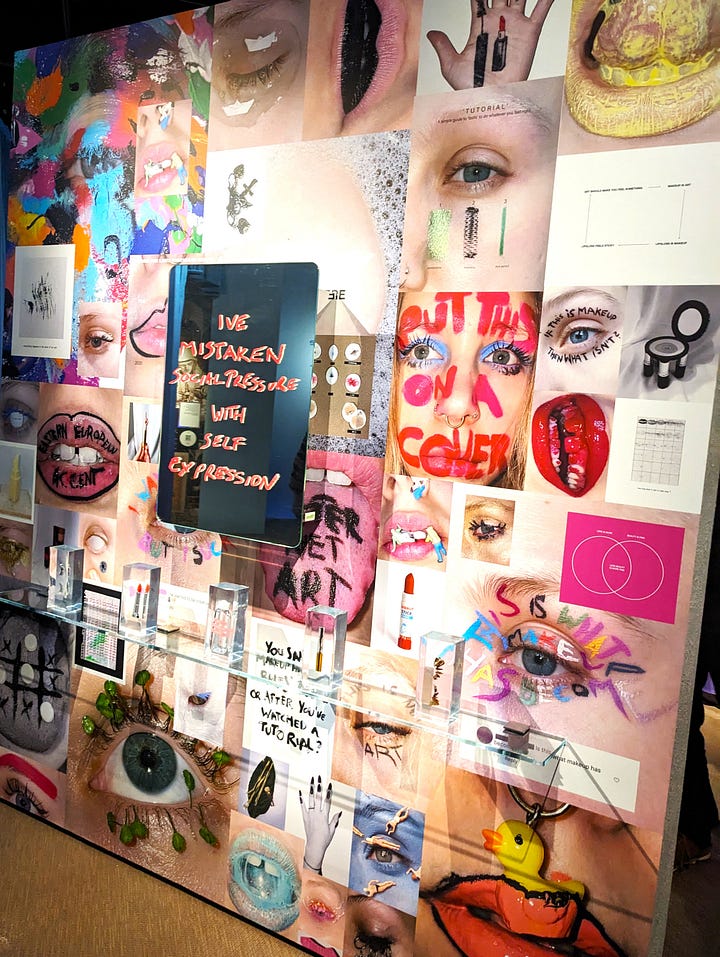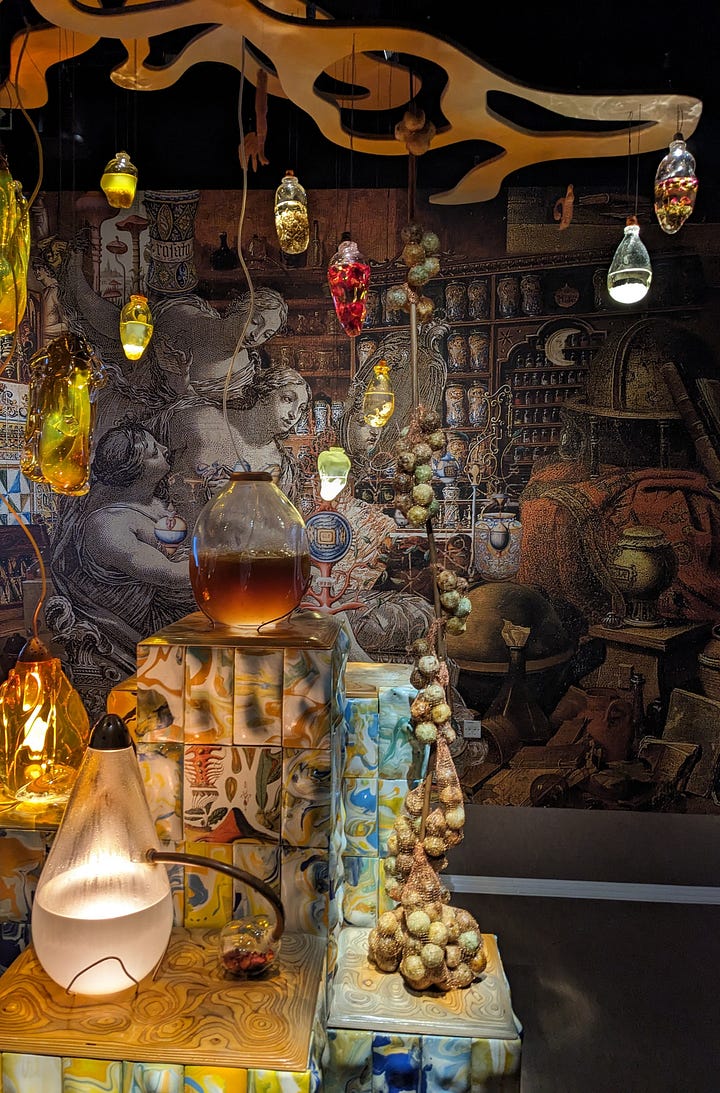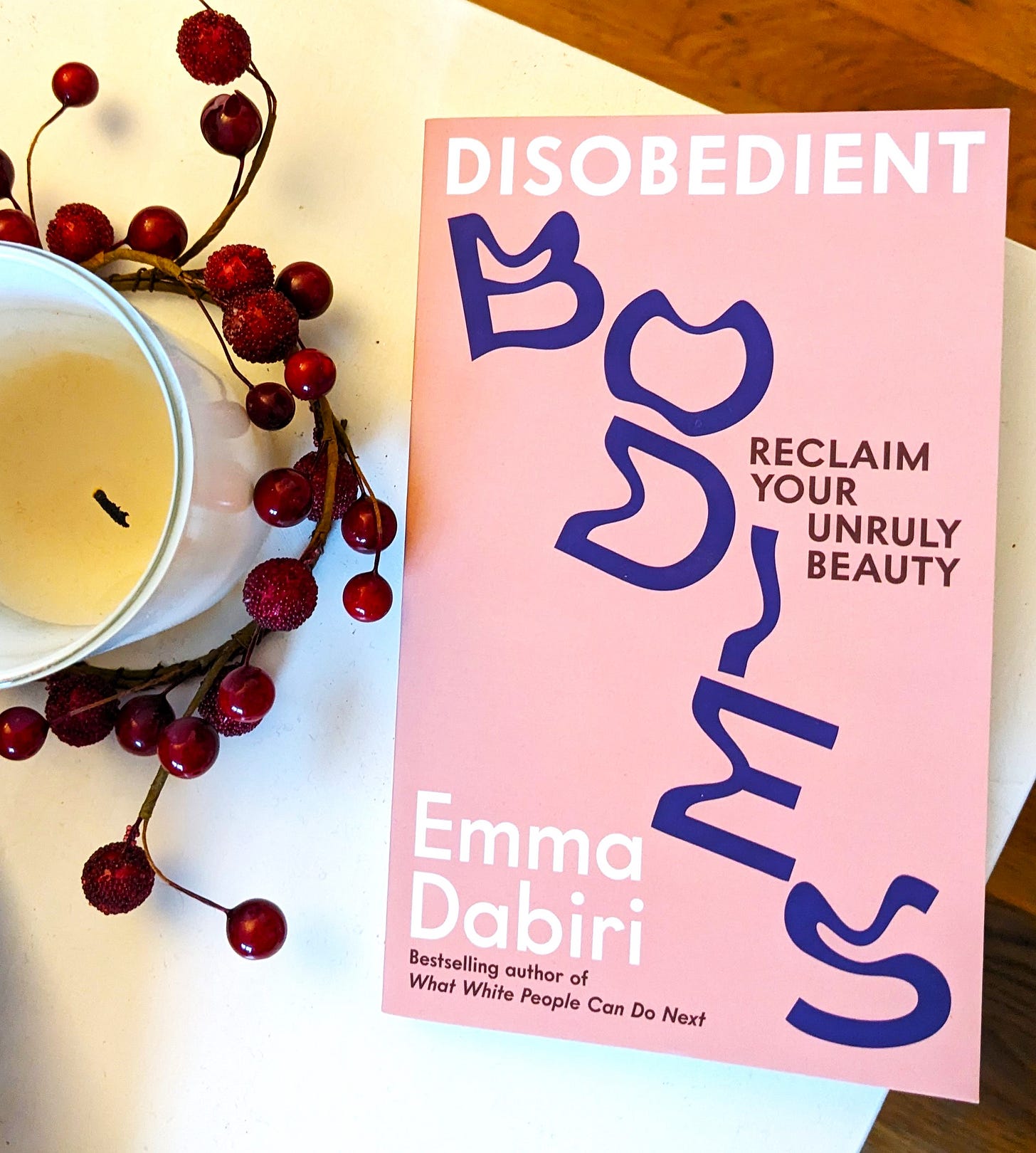🧭 Cultural Compass #11
A round-up of culture influencing my navigation of life: The Beauty Issue
I'll be trying something new for the next few issues of Cultural Compass, whereby there is a general theme connecting each of the cultural snippets/recommendations shared.
Let's call this inaugural version: The Beauty Issue.
🖼 Cult Status
Last month I visited the Wellcome Collection's (free!) The Cult of Beauty exhibition, which explores historical and contemporary definitions of beauty through three sections: The Ideals of Beauty, The Industry of Beauty, and Subverting Beauty.
The impressive display begins by exploring what, and who, we - as individuals and/or society - consider to be beautiful, and how this has changed over the last few of centuries. Cutting through themes of class, gender and race, each piece prompts the viewer to ponder our own understanding of beauty, and consider why, or why not, we may consider something to be attractive - whether a portrait painting from 300 years ago, a sculpture depicting bodily perfection according to the Romans, or the image of a 20th century pageant queen. It’s interesting how some beauty trends seem to be reignited intermittently through the ages, and how the notion of presenting ourselves in a particular way to the world has always been of interest. Is the selfie really all that new?
The section exploring the beauty industry was somewhat of a candy shop for anyone who, like me, is a sucker for lotions and potions. It also re-confirmed something I cannot ignore: that I am a marketer's dream, frequently sold on the promise of a scent changing my entire aura, or red lip turning me into a powerhouse of a business woman. Conflicting as the issue may be on whether beauty ideals are a burden on people, and especially women, or not, I personally enjoy the rituals and routines of moisturising and ‘making up’ my face. While all the exfoliating and hair removal can at times feel tedious, there's nothing like a head-to-toe pamper to make me feel as close to a Hollywood starlet as a Valleys girl can get. I try to keep myself aware of the dream I'm being sold by brands who want me to buy big, and take it all with a pinch of salt. So if I can get a bit of enjoyment, then no harm done, right? Generally, that's my take, but the images by Juno Calypso in this section I did find quite jarring; to me they spoke of those moments where we can get too sucked into who or what we are supposed to be, supposed to look like, to the point of experiencing pain. Beyonce's Pretty Hurts came to mind - a cracking tune (as always from Queen Bey) with an important message, but a music video I sometimes find difficult to watch.


The final element of the exhibition was in some ways perhaps the most intellectually challenging, exploring constructs in creative ways that I'll admit I couldn't always connect with. Interestingly, or perhaps unsurprisingly, the section I lingered around the most, along with the friend I visited with, was a room of screens depicting trends and reels and famous images from across social media channels, notably TikTok and Instagram. A number of famous faces appeared, as did multiple copies of those famous faces, such is the current popularity of particular make up and hair fads that could suggest a collection of strangers belonged to the same family (hint: they begin with a K). But is this beauty, to all look the same? To have one ideal, one notion of what it is to be pretty or attractive? I think not, and rejecting that notion is perhaps what the subversion section was ultimately trying to convey.
Do you have a clear, or complicated, idea of what beauty means to you?
📖 Body Beautiful
After the exhibition, I picked up a copy* of Emma Dabiri's latest book, Disobedient Bodies: Reclaim Your Unruly Beauty, which has been published in conjunction with the showing.
* As an aside, the shop at the Wellcome Collection is full of lovely gift ideas for recipients of all ages, should you be in the area with some time to drop in and browse.
A perfect accompaniment to The Cult of Beauty, but easily read as a stand-alone piece, Dabiri's book is a fairly swift read at just 150 pages - earning it a spot on
’ favourite mini non-fiction books list. I read it in two sittings, and it could be done in one, though the short sharp chapters also make it perfect for dipping in and out, offering an accessible approach to what otherwise may have been presented as an essay.The book is a celebration of our bodies in all their forms, and an invitation to better acknowledge that these are ours and ours alone, not to be pulled and plucked, dressed up or dressed down, to satisfy anyone else's gaze. Dabiri explores how we might unshackle ourselves from the constraints and demands placed on us, particularly as women, to do beauty in a certain way, but with a view to then still find pleasure in the routines and rituals of beauty when they become more personal.
Like me, she is not averse to a lengthy session with lotions and potions, and shares intimate glimpses of "getting ready with the girls" for a night out, which was such a rite of passage during teenage years especially. I felt I could draw a lot of parallels between my experiences growing up in South Wales with how she describes growing up Dublin - and the Irishisms shared throughout add a dose of hilarity to this otherwise quite academic read. One key difference between us however is the racism Dabiri experienced as a young Irish-Nigerian woman in Ireland, which she explores here in the context of the wider narrative of examining the concept of beauty, as well as in a more personal sense. Interestingly, we both succumbed to the lure of fake tan, neither of us satisfied with the apparently wrong shades of “pale” legs.
In considering how we might think, and do, differently, Dabiri draws on a variety of cultures and traditions that offer perhaps a healthier outlook on what is beautiful. There are several references to Yoruba approaches that resonated though were new to me, such as the idea of beauty being linked to achieving or demonstrating balance, as well as concepts I felt slightly more familiar with such as Japan's wabi sabi: appreciating impermanence and imperfection.
This will definitely be a book I'll re-read multiple times, and feel certain I'll pick up something new on each flick through, as I navigate my own journey with beauty ideals.
🎄 The Ritual of Advent
And, speaking of my own journey, this year I treated myself to a luxurious beauty gift: a Rituals advent calendar. Even better, I actually bought it in the sale at the end of last season, so it's the 2022 edition, but it came at a bargain price, and though it took a bit of time to set up (I got into full crafting mode) the Christmas tree shape is the perfect alternative to having an actual tree in a small North London flat.
I've been looking forward to getting it out since I bought it (approx. 10 months ago), having only peaked at the box but leaving the ribbon untying to just a few days ago when I was ready to bring out the decorations. For anyone unfamiliar with the concept of an advent calendar (as it turned out this week that my partner was!) you open a new window/box each day from December 1st to 24th, counting down to the big day. Traditionally you'd be more likely opening the window of a card calendar to a festive image - something to look at, but not to consume. Of course, capitalism crept in, and growing up my windows were always full of little chocolates - a morning treat before school! I feel like I missed the moment when adult calendars really became a thing, but the Rituals ones have been drawing my attention in recent years (as mentioned, marketers' dream) for their festive cosiness matched with the sense of personal decadence - which in itself feels quite seasonal.
Day one was a mini suede vanilla candle, lit to ignite the ritual of advent, and yesterday I opened a delicious cedar orange diffuser. The remaining unknown is an excitement! But regardless of what will be in the shiny gold parcels, whether I'll indulge in them all myself or perhaps store some as little gifts for others, looking at this tree every day for the rest of the month will bring a bit of joy to light up the moments of work stress, social fatigue or having to face yet another pile of dishes to wash. And if these small moments in themselves are not beautiful, then what is?
P. S. if you’re in the seasonal mode of giving and receiving, be sure to check out The Navigation Book Swap!
If you liked this piece in particular and would like to show some support without a paid subscription, you can still buy me a coffee via Ko-fi.







I too am a marketers dream even though I work in brand. I hope you do get the space you want for a biggee tree next year. Enjoy the advent calendar, you have yourself to please, why not.